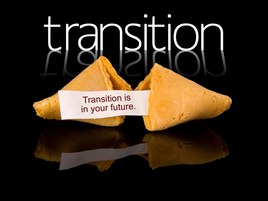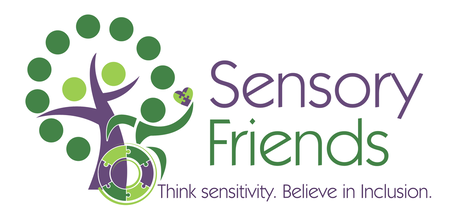
- Student – if the IEP team feels it is appropriate.
- Parents
- Regular Education Teacher
- Special Education Teacher
- Physical Education Teacher
- Therapists (Speech, Occupational, Physical, etc.)
- LEA (Local Education Agency) Representative
-
Agency Representatives that can provide transition services:
- Division of Vocational Rehabilitation
- Centers for Independent Living
- Social Security Administration
- Local Career, Technical and Vocational Schools
- Other Adult Service Providers
Once a student reaches the age of eighteen, he or she is considered an adult and all rights will be transferred to your child. This means your child will have the right to:
- Request an IEP meeting
- Request copies of their school records
- Make decisions at the IEP meeting
- Consent to services
- Do everything you as a parent were able to do.
It’s also important to note that if it is determined that a student cannot carry out these decisions independently (due to the severity of his or her disability), then the IEP team could decide that transferring rights is not appropriate.

At Age Fourteen:
Transition planning may begin at age fourteen, but parents together with the IEP team may feel it’s appropriate to begin sooner. Transition planning may include:
- Learning about the students strengths, interests, and career ambitions
- Identifying transition needs
- Focusing on courses of study (courses leading to a standard or special diploma)
- Determining training or instructional needs regarding self-determination
- Make decisions
- Make choices
- Solve problems
- Set and reach goals
- Advocate for themselves
At Age Sixteen:
Transition services should begin at age sixteen. Transition services listed in the IEP may include:
- Obtaining input from the student on his or her interests, areas they feel they need assistance with, and post-school plans (student can submit information in writing, recording, or with the use of pictures – however easiest for them to communicate their thoughts).
- Transition Assessment Results (this reveals the student’s skills and needs with regards to education/training, employment, independent living skills, community involvement, relationships, financial literacy, and self-determination).
- Measurable Annual Goals – based on assessment data collected by the IEP team and student input.
-
A Statement of Transition Services – the IEP team determines the areas in need of services:
- Instruction
- Daily Living Skills
- Employment
- Related Services
- Community Experiences
- Post-school Adult Living
- Functional Vocational Evaluation
These are designed to focus on improving your child’s academic and independent functional performance. These activities target specific areas that will help student’s transition into post-school life. Please note this is determined by the IEP team, data collected, and input from the student. It’s important to base the transition plan around the areas of need, interests and strengths of the student.
Examples of Coordinated Set of Activities could include:
-
Community Experiences:
- Using community resources: healthcare facilities, bank, library, laundromat, restaurant, supermarkets, go to the movies, etc.
- Ability to travel – driver’s license, use public transportation, use maps or tools for directions, etc.
-
Employment Experiences:
- Participate in a vocational or career awareness program.
- Identify supported employment agencies and evaluate their services and programs.
- Participate in a supported employment program.
-
Independent /Daily Living Skills:
- Learn the proper attire for different occasions (Job Interview, Going to work, visit with family).
- Learn how to manage a daily time schedule and keep a calendar of appointments.
- Pay bills with a check or electronically, manage expenses, save for the future.
-
Self Determination Skills:
- Enroll in self-advocacy and self-awareness courses.
- Plan for learning about voting, rights, and participation in major life decisions.
-
Continuing Education:
- Research and apply for post-secondary education options.
- Enrollment in Financial Literacy programs/financial aid, etc.

- In written form.
- Recorded electronically (video or voice).
- During the Transition IEP meeting.
Here are some examples of what Transition Planning Post-Secondary Goals might look like on a TIEP (assuming the meeting took place in September, 2015):
Student Input: “I really enjoy cooking. I’m really good at it, but, I still need help with peeling and cutting. I would be interested in learning about becoming a chef.”
- Career Goal: Work with the IEP team and other linked agencies to identify at least 4 programs that offer cooking courses. Obtain information about the criteria and timelines required for enrollment on each program, by the end of January, 2016.
Student Input: “After graduation, I want to go to a four-year college and get my bachelor’s degree.”
- Education/ Training Goal: I will identify at least 3 colleges that match my accommodation and course needs. I will learn their differences, criteria, and time-line requirements for enrollment. I will have this this prepared by January, 2016.
- Self-Determination/Advocacy: I will be able to describe my disability and independently list all of the accommodations I will need in order to attend college classes by February, 2016.
Student Input: “I’m going to keep living at home with my parents. But, I want to be able to go to the movies by myself.”
- Independent Living: I will learn the bus route to the movie theater closest to my home with a companion. When I feel comfortable, I will take the public bus independently to go to the movies on three separate occasions by December, 2015.
Many students may require assistance and services that are available from varying agencies (agency names depend on your state). The agency name, details on the service they will provide, contact person(s), and other resources can be listed in this section (Examples include: Vocational Rehabilitation and Centers for Independent Living).
Summary of Performance:
This is a document created for students graduating high school with a standard diploma, special diploma, certificate of completion, or aging out of the school system. The Summary of Performance includes the student’s present levels of performance in academics, independent functioning, and other important details, such as, evaluations, assessments, and other data collected by the IEP team. It can also include recommendations and suggestions for successful outcomes in post-school activities (employment, continuing education, community involvement, etc.). This document is designed to assist agencies that provide adult services, such as Vocational Rehabilitation and others. It’s important to include students in the development of the Summary of Performance, because this is the document that will express the student’s interests, future endeavors, present skills, areas in need of improvement, accommodations needed, and other important details.
The Transition IEP is a document that will continue to evolve throughout a student’s high school years. Just like the IEP, this document does not have to wait an entire year to be reviewed, updated, or changed. As students master new skills and meet their goals, the team can arrange to meet at any time during the school year. The absolute goal is for parents and educators to collaborate and partner with one another, to continue to support, teach, and challenge students, so they can maximize their potential in becoming successful students, employees, and active members of their communities.
© 2015 Sensory Friends

 RSS Feed
RSS Feed